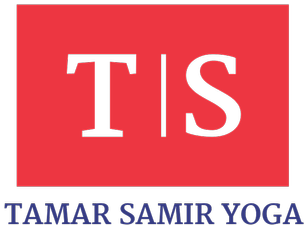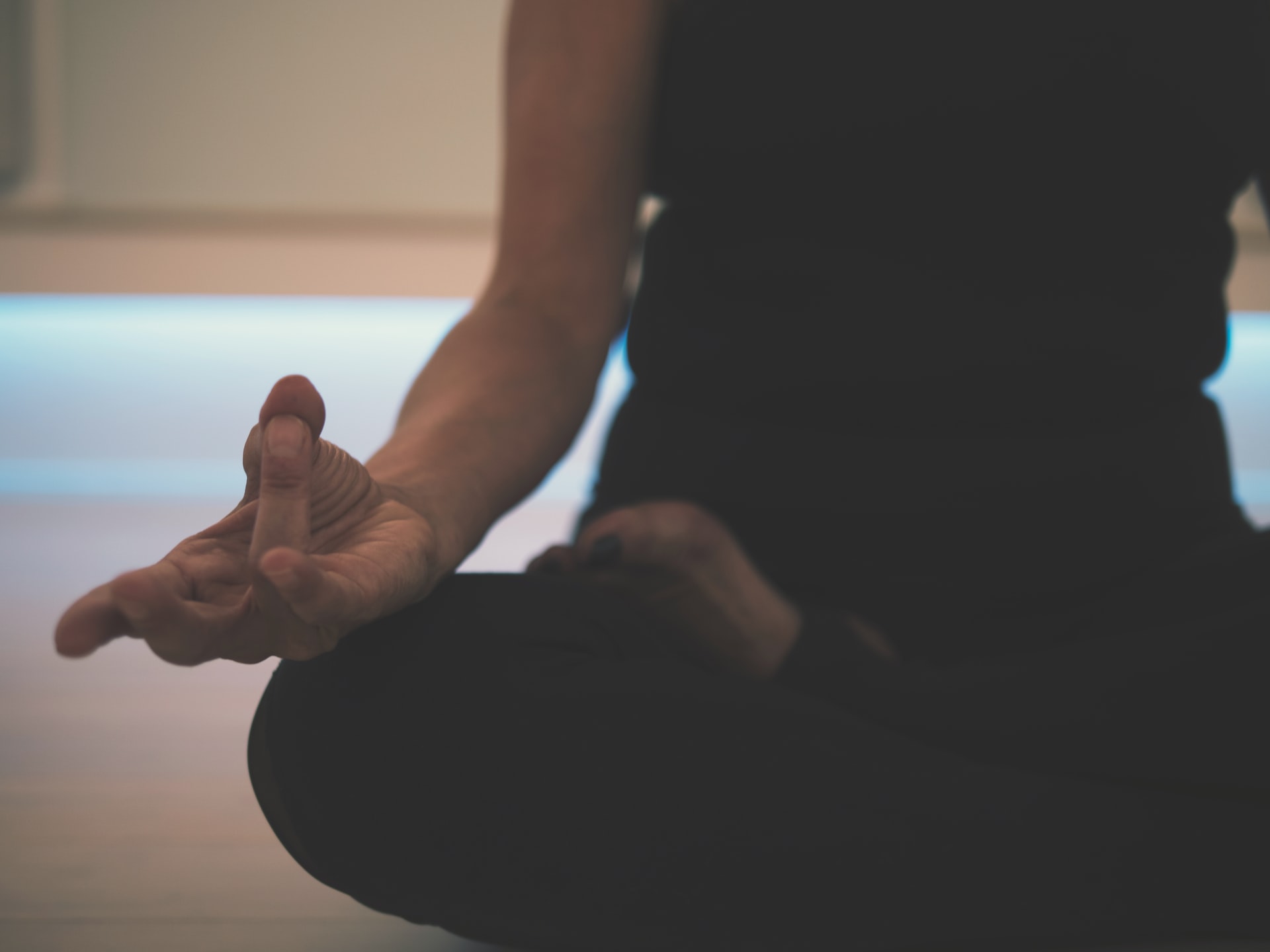Love, love, love: Anahata Chakra, the heart chakra, is the energetic center for unconditional love - and the immeasurable joy that comes from love. Katharina Maurer explains to you how you can make your ability to love flow.
The heart chakra Anahata, the fourth of the seven chakras, is not only responsible for love for others - but also for the connection to your inner being: If you listen to your inner voice and go where your heart takes you, you activate your heart chakra.
"The psychological life theme of the fourth chakra is to find ourselves, to get in contact with us and to keep and shape this contact"
Yoga can wonderfully support you in feeling and exploring your desires, your purpose, your Dharma.
Anahata Chakra - a bridge between the worldly and the spiritual
Anahata Chakra is not only located in the middle of the chest area, it is also the middle of the seven main chakras. As such, it has a special function: it is the link between the three lower, worldly chakras, which represent your physical body and your sensory experiences, and the three upper, spiritual chakras, which are more related to your intuition, your mind, and your soul stand. Anahata Chakra is the bridge and the balance point between body and mind, between heaven and earth.
The heart chakra is the basis for Vishuddi, Ajna, and Sahasrara chakra - only when the Anahata chakra is open can you really work on the higher chakras: “Expression and creativity of the fifth chakra, the knowledge of the sixth and coming home in the seventh, all that only succeeds if it happens on the basis of a heart chakra that has found its purpose ” (Richard Hackenberg and Ralph Skuban in“ Das Chakra-Yoga Praxis Buch ”)
The properties of the heart chakra
One of the most important dimensions of experience ascribed to the Anahata is compassion. A selfless expression of love. Bhakti Yoga, the yoga path that resonates particularly well with the Anahata Chakra, is suitable for this, as it is the path in which we practice devotion and compassion.
Anahata means something like "unplayed". In contrast to instruments that have to be struck, our heart sounds by itself. Our heart chakra resonates particularly well with mantras. You can address it with the Bija mantra YAM.
The yantra, the geometric equivalent of Anahata, are two overlapping triangles, one pointing downwards and one pointing upwards, forming a star. The pointing triangle symbolizes Shiva and the pointing Shakti. A symbol of the balance between male and female energy.
The element of the fourth chakra is air, which symbolizes freedom, openness, expansion, lightness, and simplicity. The qualities of the heart chakra also behave in accordance with the element of air: like air, it fills every space evenly, moves freely flowing, and gives us the chance to explore the deeper meaning of love. With the heart chakra, we can heal relationships with ourselves and others, we create connection and healing on a physical, mental and spiritual level.
So the air is like love in and around everything. In keeping with its element, Anahata Chakra sits in the energy field of Prana Vayu. “It has to do with the absorption of life energy, and of course, there is a close connection to the respiratory organs and our blood circulation. Prana Vayu and the heart chakra provide us with the strength that we need to live ” (Richard Hackenberg and Ralph Skuban in“ Das Chakra-Yoga Praxisbuch ”)
Anahata is assigned the gazelle as an animal symbol, which represents the feeling of vigilance and real life in the here and now - but also love and the bond with others: “An animal whose perception is always vigilant and mindful. Wherever mindfulness leaves it, it becomes the lion's prey. Of course, this is also a nice picture when looking at the ego. If we are careless, we quickly act selfishly and step on the feet of the neighbor: the lion eats the gazelle. Presence is one of the most powerful weapons against an excessive ego.

Summary: The correspondences of the heart chakra at a glance
- Number of lotus leaves: 12
- Chakra color: green
- Bija mantra: YAM
- Sense: a sense of touch
- Element (Tattva): air
- Geometric shape (yantra): six-pointed star
- Energy node: Vishnu Granthi
- Nerve plexus: cardiac plexus
- Kosha (shell): Vijnanamaya Kosha (spiritual-intellectual)
- Gemstones: aventurine, chrysocolla, moss agate, olivine, emerald, jade, rose quartz
- Aromas: jasmine, rose, cardamom
- Incense: mugwort, frankincense, orris root, myrrh, lemon balm, cinnamon, clove, sandalwood, liquorice
Also read: Yoga for Yoga Beginners: Basic Knowledge & Tips
Physical signs of a blocked Anahata chakra
The heart chakra sits in the middle of your chest, behind the sternum, at the level of the thymus gland. The physical equivalents are the heart, the lungs, the chest, and of course the thymus itself. Poor circulation, high or low blood pressure, and problems with the heart and lungs are signs that your Anahata is out of whack.
The organs of action that are assigned to the fourth chakra are the arms or hands, and the corresponding sense organ is the skin or the sense of touch. It also represents the breath and is therefore also responsible for the supply of prana. Our breath is our tool to connect our physical body with our mental and emotional ones and so the breath is also one of the main tools to open our heart chakra. Accordingly, a shallow, pressed breath speaks for a blocked heart chakra.
Emotional and mental signs of a blocked heart chakra
The heart chakra stands for universal and unconditional love, compassion, empathy, tolerance, and acceptance of ourselves and others. It is associated with trust, forgiveness, stability, and emotional empowerment.
If your heart chakra is out of balance, you may feel lonely and alienated. This can also lead to you looking for confirmation and recognition in the outside world and doing everything you can to get it.
Letting go: easier said than done
Another sign is resentment, a deep pain that has been inflicted on you and that you just cannot leave behind. You find it hard to forgive and the shadow clings to your heart. Even when we want to let go, we seem unable to emotionally shed negative feelings, habits, or attitudes.
On an emotional level, you will also notice a blocked heart chakra through codependency, manipulative behavior, the feeling of being worthless, and the inability to trust yourself and others. If you feel feelings such as bitterness, envy, jealousy, and tension, this also indicates an Anahata chakra that is out of balance. If you have trouble expressing your own feelings and find yourself making excessive demands on others and perhaps even compensating for a lack of love.
After injuries or disappointments, we draw a wall around our hearts to protect ourselves. When we are dependent on something to maintain our personal happiness, our heart chakra is in danger of being unbalanced. Here it is healing to satisfy the need from within instead of expecting it from others.

The benefits of an activated heart chakra
On a mental level, Anahata stands for giving and sharing without asking for anything in return. It stands for an attitude of inner abundance and the ability to recognize where the limits are in order to protect yourself.
On an emotional level, the Anahata Chakra stands for the ability to love yourself, to give and receive love, kindness, and compassion for yourself and for others. The fourth chakra also stands for trust in the inner compass, your intuition. Anahata helps you to accept things as they are and to live in balance - with yourself, but also with your environment. With a balanced Anahata Chakra, you will feel surrounded by love, compassion, and joy and you will be connected to the world.
Be brave and watch: your body will show you the places that need attention
When we work with our body, tension and the standstill that is within us automatically emerge. When we find the patience to look at all that is coming without judgment and to accept the teachings, meanings, and connections and then consciously let them go, we create great freedom.
If your Anahata is in balance, you will show yourself and others compassion, kindness, and goodwill and radiate an infectious satisfaction. When the energy flows in your heart chakra, you are grounded, free and light in your lower chakras. With a balanced heart chakra, you can love and fully understand without expectations and attachments. By opening it, you increase self-respect and open yourself to love and a positive view of life.
Keeping Anahata in balance, however, requires continued commitment. By looking under the layers of painful experiences and searching for freedom and wholeness in the heart, you remain open to true connection, with yourself and also with your relationships with other people.
Take the test: How is your Anahata Chakra?
If more than five of the following statements apply to you, you should take care of your Anahata chakra.
- I doubt myself a lot and often feel worthless.
- I doubt the love of my neighbors or my relationship is often rather superficial.
- In my relationships, I often feel envy, jealousy, and bitterness and find it difficult to forgive.
- I have high standards for myself and others. I find it difficult to accept things as they are.
- I get confirmation and recognition from material things and career successes.
- I am often electrified (professionally) and breathe shallowly and rather hectically.
- I often have cold hands and feet.
- I find it difficult to change or break habits.
- I want to control situations and try to manipulate them so that they work out in my favor.
- Intuition? What is that?
More than five statements apply to you? Here you will find out how you can bring your heart chakra into balance with the help of yoga.
Yoga for the activation and alignment of the Anahata Chakra
You activate your fourth chakra by setting intentions for your asana practice. Give and receive love, trust, and cultivate compassion. Pave the way for happiness and joy and let go of old pain and fear of new injuries. Air and space are the qualities of the heart chakra, through which you can discover infinity if you leave your limiting illusions behind.
The heart is connected to the diaphragm via fascia, "which indicates the close connection between breathing and circulation" (Das Chakra-Yoga Praxis Buch, Richard Hackenberg, Ralph Skuban). Hence, pranayama is a powerful practice for your Anahata. By expanding your heart space with asanas, you also make room on the other levels.
1. Backbends and twisting postures for a happy heart chakra
The best yoga exercises for your heart chakra are those that open your chest and draw energy to the heart. Especially backbends and rotary attitudes affect the Anahata Chakra positive, not only because of the fact that many of us spend our workday with a curved back for the round spine. Asanas for the Anahata ensure that the heart chakra is not locked in a rigid rib cage, but promote a mobile thoracic spine in which there is space for our heart and breathing.
2. The lotus mudra for the stimulation of the fourth chakra
- Get into a comfortable seat and straighten your back.
- Bring your hands together at heart level, place the little fingers and thumbs together and the wrists of both hands on top of each other. The palms of the hands form a cave, the fingers open into a flower shape.
- Meditate on the space and space in your heart and visualize yourself openly and without attachments.
Asanas for your anahata chakra
The basic asanas for the heart chakra strengthen and activate the circulation and the cardiovascular system. In order to bring the heart chakra into balance and to open it, asanas that expand and strengthen your shoulders and chest are helpful. These include Gomukhasana and Garudasana , using these asanas
- do you strengthen your spine
- stretch your arms and shoulders
- open the hips, the chest, and with it the heart chakra
The arm and leg position in the eagle not only builds strength but also trains your balance, an important property for the heart chakra. When the heart chakra is open and balanced, it promotes forgiveness, bridges your body and mind, and is home to unconditional love.
1. Ustrasana - the camel
The camel is an intense heart opener and a good countermovement to modern life in which we so often bend forward. One of the greatest challenges in life is to be vulnerable: We always feel that we have to protect ourselves and so close ourselves off. Especially after injuries, we tend to close the heart area and take a protective posture. By dropping our shoulders forward, pushing our chin forward, and rounding our back, we try to protect our hearts. This blocks the flow of prana and creates an imbalance in the heart chakra.
The camel posture is a strong asana that opens your chest and makes you vulnerable in a positive sense and opens up to receive and also to give love. The camel stretches the entire front of your body: the stomach, chest, neck, and also the deep hip flexors, i.e. the psoas. The camel strengthens your back and stimulates the abdominal organs.
2. Setu Bandha Sarvangasana - the shoulder bridge
The bridge strengthens your lower body and opens your chest.
3. Camatkarasana - Wild Thing
4. Bhujangasana - the cobra
The cobra directs the prana directly to the heart chakra. It strengthens the shoulders and ensures their stability.
5. Dhanurasana - the bow
6. Halasana - the plow
7. Matsyasana - the fish
8. Eka Pada Rajakapotasana - the dove







